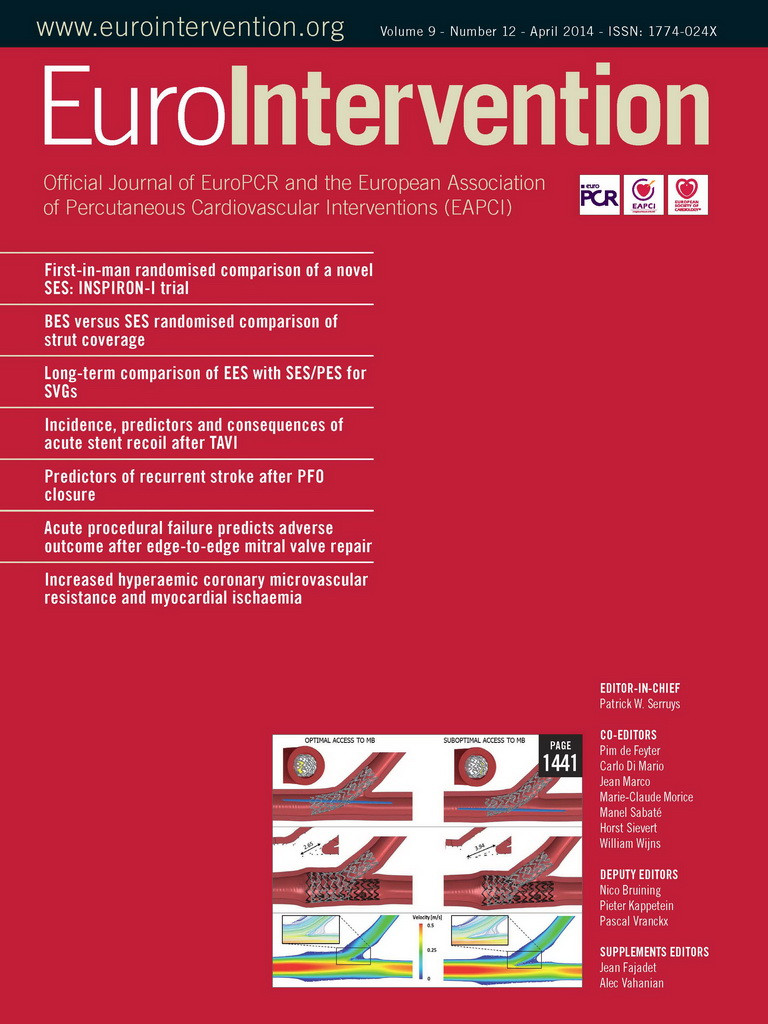I have just returned from the 12th annual scientific session of China Interventional Therapeutics (CIT), which was held this year in Shanghai. I have to admit that I am always amazed by the “hunger, thirst and drive” our Chinese colleagues possess to improve their practice and patient care whilst at the same time increasing scientific output in the form of presentations at major meetings and papers published.
It’s quite interesting to see an evolution with respect to developing technologies in China. Historically, the larger global interventional companies created a medical technology market and dominated the Chinese market with devices not available locally. The domestic companies became aware of this market and quickly learned, leading to the creation of local devices using reverse engineering. These devices were placed on the domestic market at a lower/discounted price than the imported devices with the goal of winning back market share. The native Chinese companies had to fight against the public perception on the part of Chinese patients that the big European and US company devices were of higher quality and inherently more technologically advanced than their own.
However, what I see today is that this “copycat” phase is truly over and that Chinese companies are now in a rapid innovation phase. Many Chinese companies have actually developed unique devices, not only in the coronary interventional field, but also in the field of structural heart disease and peripheral areas as well. A good example of this great leap forward is in renal denervation. A Chinese renal denervation device, the IBERIS catheter (originally from AngioCare, China), was already present at the start of the first wave of novel technologies within the field.
Compare this to those years of playing catch-up!
Coming back to the CIT, it was nice to see that a couple of technologies from the larger Chinese companies presented interesting data on their stent platforms, for example: BuMA (SINOMED), EXCEL (JW Medical Systems), Firehawk (MicroPort) and Nano+ (Lepu Medical). The Chinese Venus aortic valve (Venus MedTech) also caught my eye.
It’s really quite ironic that, while I was in Shanghai, the President of China, Mr Xi Jinping was visiting Europe for the first time to participate in the global Nuclear Security Summit in The Hague, The Netherlands. In an interview he illustrated the ties that bind China and Europe. In particular, he looked at the European 2020 strategy, a strategy for growth through more effective investments in education, research and innovation and the Chinese 12th Five-Year Plan (2011-2015) in which, amongst other aspects, Chinese companies are now allowed to seek opportunities abroad, opening up to foreign investment in domestic high-tech industries. He concluded his interview with his vision of a win-win collaboration between China and Europe through mutual high prosperity in the future.
The world at our interventional fingertips
Due to the speed of developments in China, it is all too easy to overlook how the other continents are innovating. Just recently in Cape Town, the second AfricaPCR was held and, by all accounts, it was a very successful meeting. It will be very interesting to see how Africa develops within our field over the coming years. AsiaPCR has now become a respected and well attended meeting due, in part, to a robust and solid scientific and educative content.
And what about South America?
In this month’s issue, we have invited the President of SOLACI, Jamil Abdalla Saad, to write a short commentary on interventional innovations from South America. He recalls the groundbreaking work of such pioneers as Julio Palmaz and Eduardo Souza and, more recently, Alexander Abizaid. We should never forget that our South American colleagues have a very respectable and established track record in research and innovation.
As I conclude this piece, with ACC in Washington about to start, reflecting on innovations on a global level, I would like to leave you with this quote from probably the best know innovator of our times, Steve Jobs:
“Innovation has nothing to do with how many R&D dollars you have. When Apple came up with the Mac, IBM was spending at least 100 times more on R&D. It’s not about money. It’s about the people you have, how you’re led, and how much you get it.”

